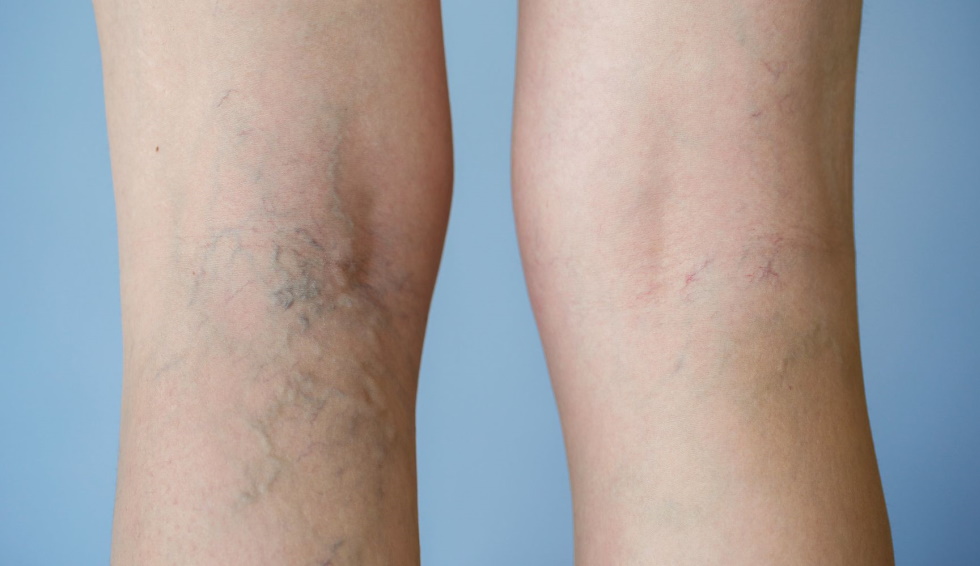Why Educators Are at a Greater Risk of Varicose Veins
- Written by NewsServices.com

Teachers spend several hours of their day standing or walking in classrooms, even when interacting with students or parents. These hours of standing puts a lot of strain on the legs, increasing the pressure in the leg veins and thus increasing the likelihood of developing varicose veins.
The risk of developing varicose veins is even significantly higher for female teachers who wear high heels to work. High heels put additional strain on your legs and feet, compromising proper blood circulation and contributing to blood pooling in your veins.
What Are Varicose Veins?
Varicose veins are twisted and enlarged veins that appear just under your skin’s surface, especially in the legs. They often appear as blue or dark purple bulges in the lower body.
Varicose veins are caused by prolonged standing, especially in one place. Your body is designed to move, and when you spend several hours standing, your veins are doing extra work against gravity to pump the blood from your lower body to your heart, leading to weakness of the valves inside the veins, which aid blood flow.
When these valves lose their strength, it becomes difficult for the veins to carry the blood up to the heart. Then, the blood pools within the vein, causing the vein to enlarge, resulting in varicose veins.
How Can Teachers Prevent Varicose Veins?
Educators such as teachers, can do a few things to improve their leg and vein health. They are:
1) Walking around or taking breaks from standing
Your body is designed to move. Standing or sitting for extended periods puts a lot of strain on your legs, causing poor blood flow. Even though your job as a teacher requires you to stand for several hours, you can still maintain proper blood flow by walking around the classroom or taking breaks to sit for short periods. Also, when you are not at work, ensure that you engage in exercises that work the legs, such as jogging and bicycling.
2) Maintaining a healthy weight
Managing your weight is an important factor in preventing varicose veins. Carrying extra weight puts more pressure on your lower body, especially your leg veins. Losing weight is worth the effort of preventing varicose veins as it takes that extra pressure off your body, thus improving blood flow.
3) Wearing comfortable footwear and clothing
Tight clothing and shoes can contribute to the poor circulation of blood, eventually leading to varicose veins. It is best to wear flat, comfortable shoes and put those high heels aside at work. High heels put a lot of strain on your legs, causing your vein valves to work even harder against gravity.
4) Putting feet up while sitting
Elevating your legs is one of the important things you can do to prevent varicose veins. It relieves your leg of the pressure built up in it throughout the day and promotes blood circulation. So be sure to prop your feet up for a few minutes each day.
Symptoms of Varicose Veins
There are certain common recognizable symptoms of varicose veins. They are:
-
* Bulgy blue or dark-purple veins can be seen just under the skin.
-
* Cramping, throbbing and mild swelling in lower legs.
-
* Itching and brown discoloration around one or more of the veins.
-
* A painful, achy, or heavy feeling in the legs.
Complications of Varicose Veins
Certain complications of varicose veins may occur, some of which are:
-
* Phlebitis – painful inflammation or swelling of the veins.
-
* Poor circulation.
-
* Leg ulcers.
-
* Blood clots.
Varicose veins can be a genuine health concern causing pain and discomfort and potentially leading to more severe problems. So if you experience any of the symptoms stated above, you should talk to a vascular specialist.
It is not only teachers who suffer the risk of developing varicose veins. Other occupations such as nurses, hotel workers, hairdressers, police, and retail store clerks are also at a higher risk for varicose veins.
Even if you do not have a severe case of varicose veins, it is important that you seek the opinion of a vascular surgeon, who can examine and if needed, perform varicose vein treatment for you.













